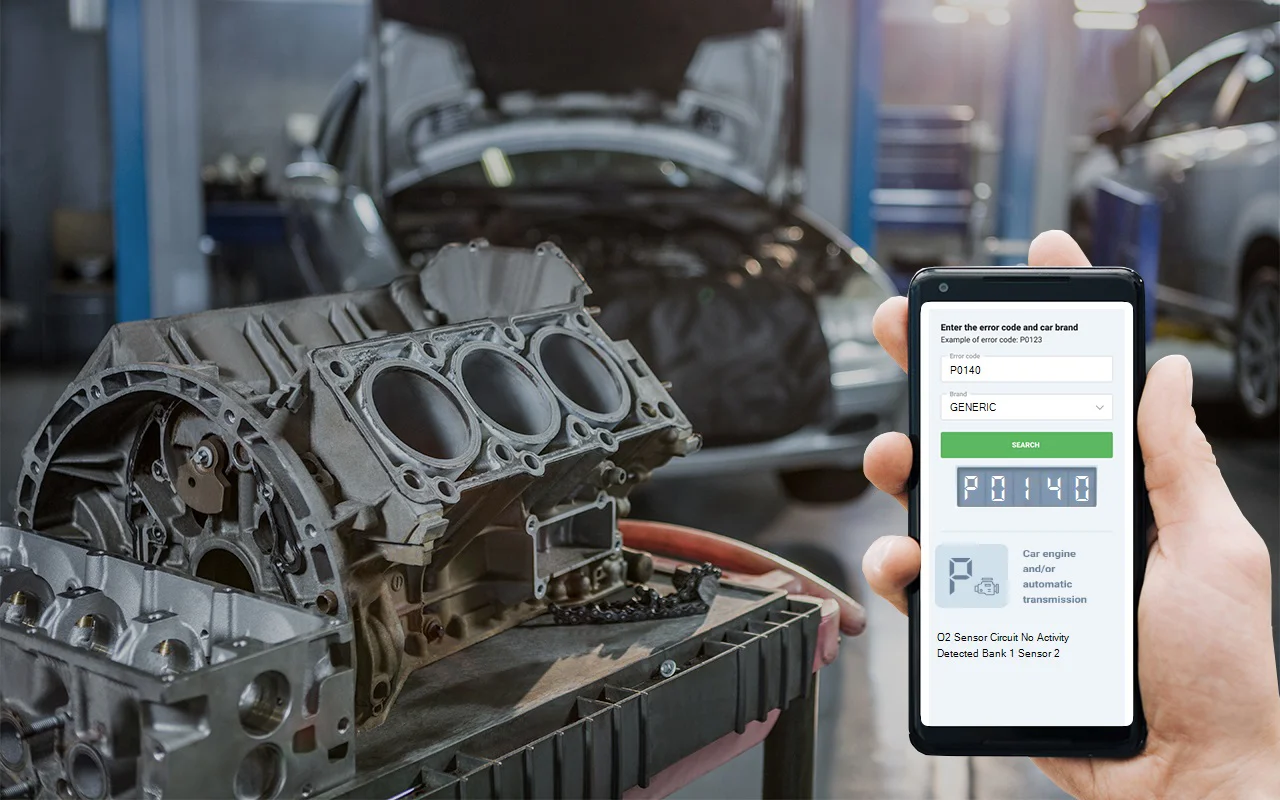Let me break down what p0140 means, straight from my years in the shop. When you see this code show up, your car’s computer is basically telling you it’s not picking up any activity from the oxygen sensor sitting downstream of the catalytic converter on bank 1 (that’s the side with cylinder #1-old-timers like me always check there first). That sensor’s whole job is to monitor how well your catalytic converter is scrubbing the exhaust gases. It sends a steady flow of info back to the powertrain control module (PCM), letting it know if everything’s running clean. If the PCM notices that this sensor’s voltage isn’t budging-no movement, just a straight line-it throws the P0140 code. Now, this sensor isn’t there to control your engine’s performance directly, but trust me, it plays a vital role in keeping your emissions in check and making sure you’ll pass your next smog test.
DTC P0140
Causes and dtc P0140
From experience, when you’re tracking down dtc p0140 hyundai or seeing it in something like a Ford or a Renault, there are a few common culprits that show up time and again. Nine times out of ten, the oxygen sensor itself is just worn out or got gunked up over time. But don't overlook the wiring-I've seen plenty of sensors with chewed, broken, or corroded wires, especially in cars that park outside or sit a while. Sometimes, you get a bad ground or a signal wire that's shorted somewhere along the harness. Rarely, the PCM is to blame, or maybe it just needs a software update, but that's not where I'd start. Here’s what I always check first in the bay:
- Downstream O2 sensor that’s failed, worn out, or contaminated
- Damaged, shorted, or corroded wiring or connectors at the sensor
- Sensor ground problems
- PCM glitches or old software (rare, but it happens)
- Sensor contamination from coolant or chemicals, like when someone gets carried away with silicone spray
Symptoms of P0140
So, what tips you off? Usually, the first sign is that dreaded check engine light-sometimes it’s steady, other times it might blink just to get your attention. You could also flunk an emissions test, or notice the exhaust smells a little off or looks smokier than usual. But here’s the twist: most cars with this code drive just fine. No rough idle, no stalling, nothing that screams 'fix me now'-other than that warning light and, maybe, some extra pollution out the tailpipe. Still, don’t let that fool you into ignoring it.

Diagnosis steps for obd2 code P0140
When I’m faced with an obd p0140, I always start simple before reaching for the expensive tools. First up, I inspect the wiring and connectors at the downstream O2 sensor-look for frayed wires, green corrosion, or anything that just looks off. Give the connector a wiggle or unplug and replug it-sometimes that alone tells you what you need to know. Next step, I grab my scan tool and watch the sensor’s live readings. If the voltage isn’t moving, that’s a red flag. I’ll break out the multimeter to double-check the ground and power to the sensor-bad grounds trip up a ton of folks. If all the wiring checks out but the sensor’s still dead, I’ll test the sensor itself or swap it with one from another bank, if possible. Only after all this do I start thinking PCM issues. And one more thing: make sure the car’s cooled off before you crawl under there. Exhaust burns are no joke-ask me how I know.

Common Mistakes with P0140 code
A classic mistake I see is folks jumping straight to replacing the O2 sensor without giving the wiring a once-over. That’s a quick way to burn cash if a simple broken wire or loose connector is the real problem. People also overlook contamination-coolant leaks or a stray shot of silicone spray can ruin a sensor fast. And don’t forget to test the sensor’s ground, or you’ll be chasing weird electrical gremlins for hours. Skipping these steps means you might fix nothing and waste time and money.

Seriousness of obd code P0140
Now, obd code p0140 isn’t usually going to leave you stranded on the side of the road or make your car run rough. But don’t kid yourself-it’s still a big deal. If you ignore it, odds are you’ll fail your next emissions test, and you might even get fined for high emissions depending on where you live. More than that, a faulty sensor or bad wiring can mask other serious problems, and if the PCM’s involved, things can get complicated fast. My advice? Don’t put this one off. Small things can spiral if you let them slide.
Repair solutions for P0140 trouble code
Most times, the fix for this one is pretty straightforward: if the downstream O2 sensor’s shot or contaminated, swap it out. But here’s a pro-tip from the garage-don’t touch that sensor until you’ve checked every inch of wiring and the connectors. Clean up or repair anything suspect. If you spot a bad ground or a busted wire, fix it and see if the code stays gone. Only chase after the PCM or its software if you’re absolutely sure the sensor and wiring are solid. Once you’ve made the fix, clear the code and take the car for a drive-make sure that light stays off before you pack up your tools.
Conclusion
Here’s the bottom line: when you see P0140, your car’s computer isn’t seeing any activity from the post-catalytic oxygen sensor. It’s not likely to wreck your day-to-day driving, but it’ll definitely cost you at the emissions station and could hide other issues if you ignore it. Best move? Start by checking wiring and connectors, then replace the sensor if needed. Don’t let this one slide-fix it soon for your car’s health and your own peace of mind.




